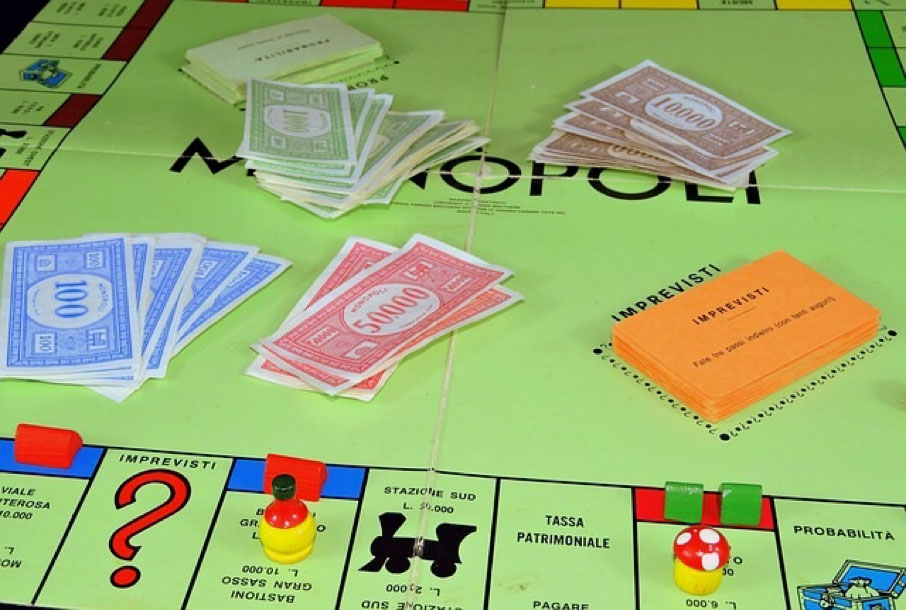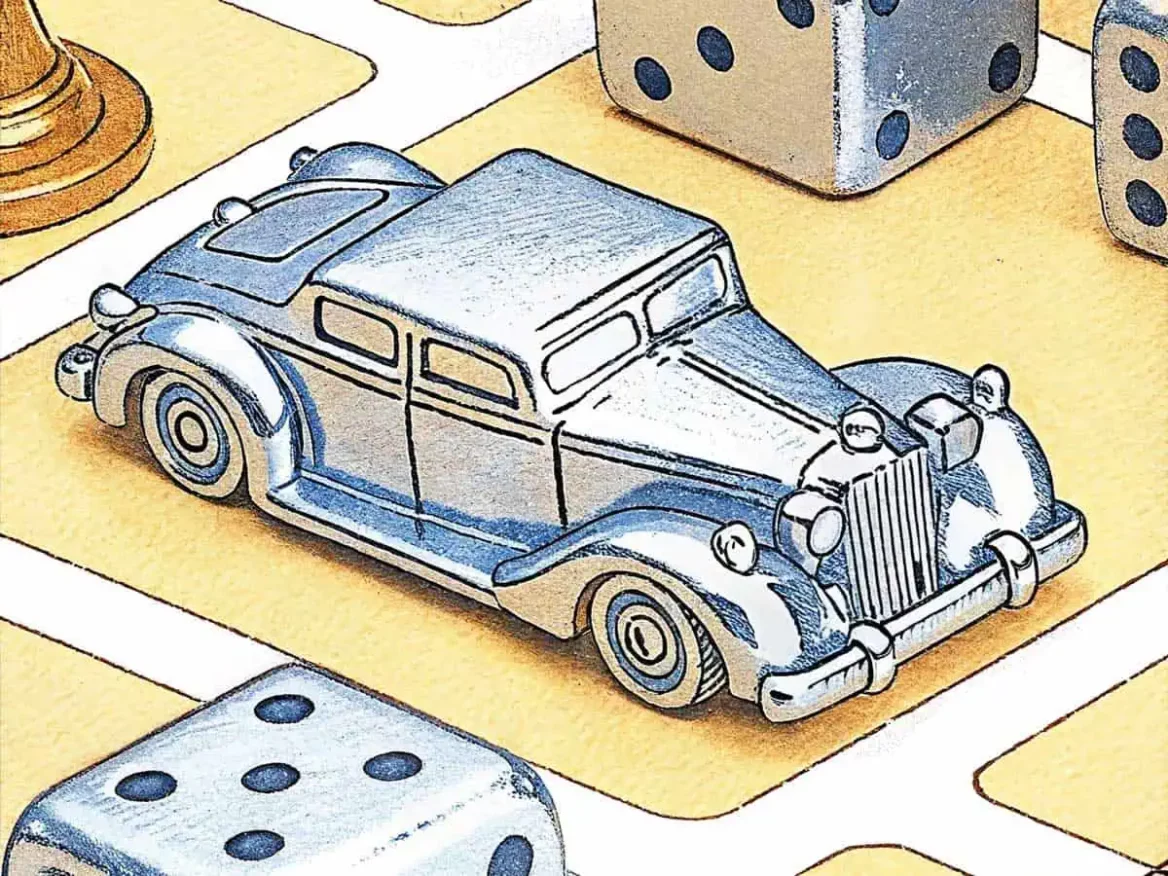In this article, I analyse Hasbro’s strategy of repeated trademark registrations for Monopoly. I explain how this approach, when it circumvents the duty of use, can be seen as bad faith by the courts.
New ideas (or old ideas in a new guise) are often accompanied by the necessary legal conflicts. In this article, I discuss a ruling that concerns one of the most famous games in the world, namely Monopoly.
Monopoly and the rules of the game
Everyone knows the well-known trademark Monopoly from the manufacturer Hasbro and, as befits a well-known trademark, Hasbro has neatly established everything in trademark law. Thus, it filed European applications for the word mark MONOPOLY in 1996, 2008 and 2010.
The last registration from 2010 was a (repeated) registration for the same word mark for existing but also partly new goods and services.
The reason why trademark owners of well-known trademarks regularly re-register such marks is to prevent other companies from snapping up these marks for the goods and services for which they were registered but have not been used for a period of five years from the date of registration.
Non-usus equals problematic
Indeed, after that period, such a mark can be declared revoked on grounds of non-ususus. A trademark owner can then defend himself against an action for revocation for non-usual use by presenting evidence of genuine use during that period. However, this evidence is not always easy to gather, if it exists at all, of course.
If a request for revocation is successful, the consequences for the original trademark are significant, as the way is then clear for this third party to start registering and using the revoked trademarks themselves for the goods and/or services for which they have been revoked.
So to avoid such non-usus status, trademark owners often re-register their trademark(s) every five years even for goods and services for which they normally no longer use them directly. Examples are the marks Raider for sweets (now TWIX) and Smiths for crisps (now Lay’s).
Such so-called deposits are also known as repeat or defensive deposits. With this periodic restart of the five-year period of normal use, the trademark owner is out of worry for a while and her trademark(s) are safe from hijackers on the coast.
Valid or invalid deposits
However, the strategy of repeatedly reapplying for trademark rights is not entirely fail-safe. This is so because with a repeat filing, the obligation to present evidence use in respect of pre-existing (same) trademarks is effectively circumvented at artifice.
A mark that is not used should actually be released.
All trademark regulations are not designed to give trademark owners an infinite monopoly on (word) trademarks for the goods and services for which these trademarks may be registered but will ultimately never be used.
The same applies to the ability of the trademark owner to use these renewed trademark registrations to get out of its obligation to submit proof of use if requested – after the five-year period has expired – by an interested party.
A grey area
Legally, reapplication and understandable counter-arguments have created a grey area. Hasbro, for example, has fought several lawsuits in this area, including with Croatia’s Kreativni Dogadaji (hereinafter Kreativni). In 2017, Hasbro crossed swords with this company when it sought, unsuccessfully incidentally, to register the figurative mark Drinkopoly.
A few years later, however, it was up to Kreativini to achieve success. Monopoly filed a renewed registration of the word mark MONOPOLY for various fields of use. Kreativini argued that the name Monopoly was only used for games and that the re-registration was only to prevent anyone else from using the name in areas other than games – for which, admittedly, the name Monopoly had long been used.
For some of the services for which the Monopoly mark was registered by Monopoly, the claim was upheld. Monopoly was acting in bad faith with its registration, the court ruled.
The concept of bad faith
Let us elaborate on this notion of bad faith. In its judgment 1, the court states with regard to the concept of bad faith (as expressed in Article 52(1)(b) Regulation No 207/2009 2) that this concept is not defined. It is therefore important for its interpretation to refer back to Procedural law.
That case-law can be found in the in the well-known Lindt judgment. In this judgment, the CJEU ruled that this issue should be assessed taking into account all relevant factors of the concrete case.
The focus here is on the subjective motives on the part of the trademark applicant, i.e. whether an unfair intention or other impure motive is / was present that is aimed at adversely affecting the interests of third parties in a manner inconsistent with fair use or to obtain an exclusive right (for purposes other than those covered by the (trademark) function ‘indication of origin’).
Thus, with these principles formulated in the Lindt judgment in mind, the court concluded that there was bad faith on Hasbro’s part in this case and, for that reason, it upheld the earlier (similar) ruling of the Second Board of Appeal of the EUIPO.
Decisive for this decision were, in particular, the statements made by Hasbro’s employees during the hearing, namely that the repeat filing was aimed at taking advantage of the rules of Union trademark law by artificially creating a situation in which no normal use of the trademark had to be shown (anymore).
Hasbro’s defence
Hasbro unsuccessfully argued that this new registration was there because of “administrative efficiency”, and because this was “the way the applicant managed its huge trademark portfolio”.
The real advantage Hasbro gained from its ‘efficient management’ of its trademark portfolio soon became clear when the Board of Appeal found that Hasbro had been able to use its course of action of filing new trademark applications for existing trademarks to its advantage in two opposition proceedings.
Indeed, in these proceedings, Hasbro had managed to circumvent its obligation to prove genuine use of its existing earlier trademarks by successfully invoking the newly registered trademarks by it for which there was no obligation of use yet.
Since in Hasbro’s case against Kreativni there was no commercial logic behind its additional trademark registration other than that it was used to circumvent its duty of use, Hasbro’s filing was in bad faith. Hasbro’s argument that a repeat filing is common in the industry and that it had been advised to do so does not change this.



